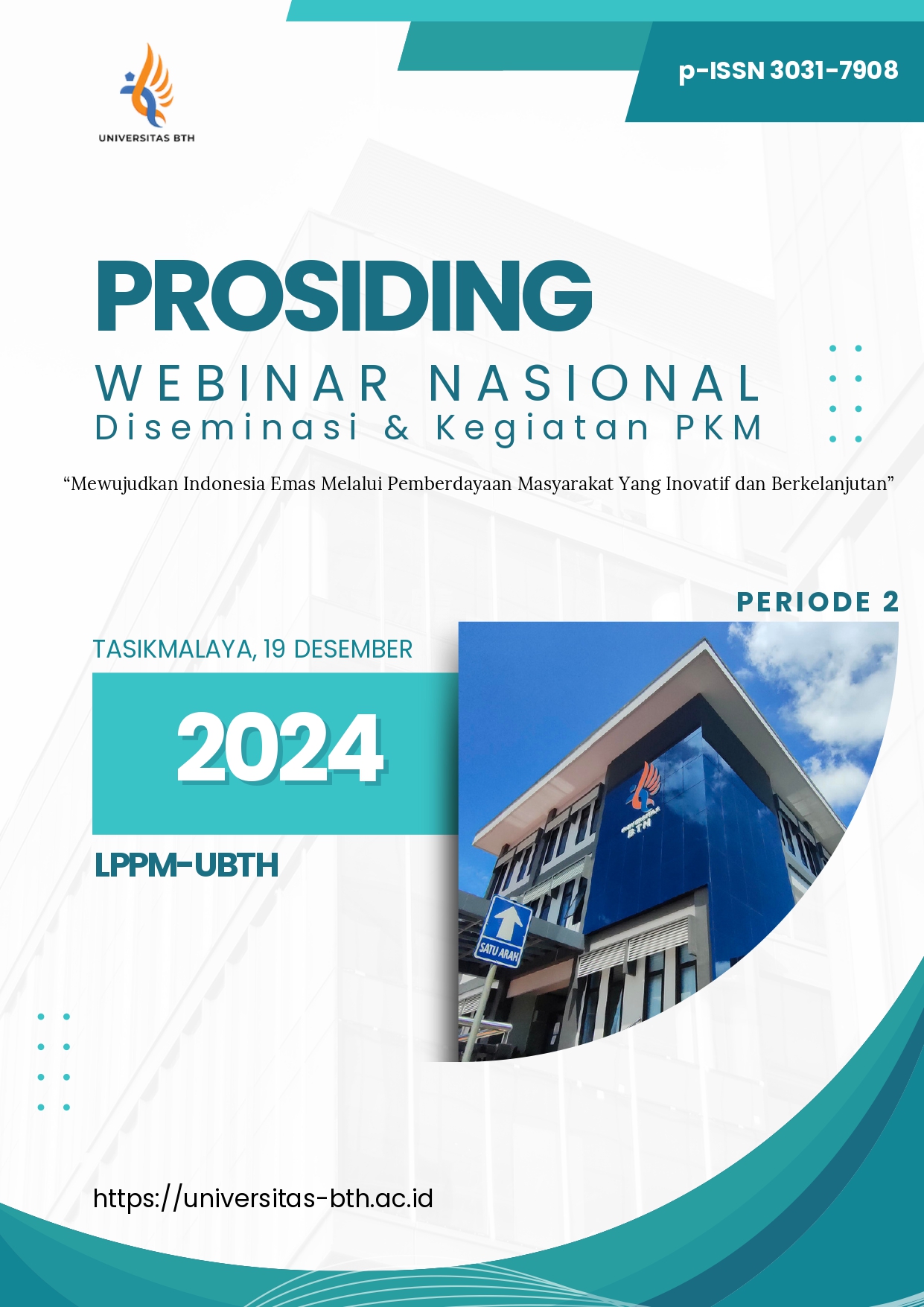OPTIMALISASI PENGGUNAAN GAME DALAM AKTIVITAS KELAS BAHASA INGGRIS
Keywords:
optimization, games, classroom activities, englishAbstract
The use of games is one way to build students' motivation in learning English. The use of games is usually done at the beginning or core activities of learning. However, the application of games can basically be applied in every stage of classroom activities, both in pre-activities, activities, and post-activities. Based on this, the author wants to know how effective the use of games is in every English class activity, both pre-, while, and post-activities, as well as the impact on student involvement in English learning. The methods used in this community service activity are (1) giving a pre-test before the presentation session and (2) presenting presentation topics related to learning scenarios with the use of games both in pre-, while, and post-activities. (3) giving post-test after the presentation session (4) processing and analyzing pre-test and post-test data to produce descriptions and graphic presentations related to the effectiveness of using games in-class activities and their impact on student involvement. There is an effective use of games in the pre-activities stage, which can increase students' motivation to learn English so that they become more interested and ready to engage in learning English. There is an effectiveness of using games in activities that can increase students' understanding of the English material taught so that students become active in interacting during learning activities. Furthermore, there is an effectiveness of using games in post-activities, which can help students strengthen the material that has been learned to create student involvement in obtaining feedback related to the material learned.
References
Anderson, L. W. (2002). The new Bloom’s taxonomy: Theoretical and empirical foundations. Allyn & Bacon.
Arnold, J., & Brown, H. D. (1999). A map of the terrain: Games in language learning. Humanizing Language Teaching, 1(2), 1-7.
Clark, R. C. (2014). Developing technical training: A structured approach for developing classroom and computer-based instructional materials (2nd ed.). Wiley.
Gagné, R. M. (1985). The conditions of learning and theory of instruction (4th ed.). Holt, Rinehart and Winston.
Hadfield, J. (1999). Beginner's guide to using games in the language classroom. Oxford University Press.
Hinkel, D. (Ed.). (2005). Handbook of research in second language teaching and learning. Lawrence Erlbaum Associates.
Li, L. (2007). The use of games in English language teaching. English Teaching Forum, 45(2), 10-16.
Mayer, R. E. (2009). Multimedia learning (2nd ed.). Cambridge University Press.
Mulyasa, E. (2013). Pengembangan dan implementasi kurikulum 2013. Remaja Rosdakarya.
Nunan, D. (2003). Practical English language teaching. McGraw-Hill.
Richards, J. C., & Renandya, W. A. (Eds.). (2002). Methodology in language teaching: An anthology of current practice. Cambridge University Press.
Sanjaya, W. (2010). Perencanaan pembelajaran: Suatu pendekatan praktis. Kencana.
Schunk, D. H. (2012). Learning theories: An educational perspective (6th ed.). Pearson.
Sukmadinata, N. S. (2008). Perencanaan pengajaran: Dasar-dasar dan aplikasi (Edisi ke-3). Remaja Rosdakarya.
Sweller, J. (1988). Cognitive load during problem solving: Effects on learning. Cognitive Science, 12(2), 257-285. https://doi.org/10.1207/s15516709cog1202_4
Thomas, M. (2003). Teaching English with games. Oxford University Press.
Wright, A., Betteridge, D., & Buckby, M. (2006). Games for language learning. Cambridge University Press.

